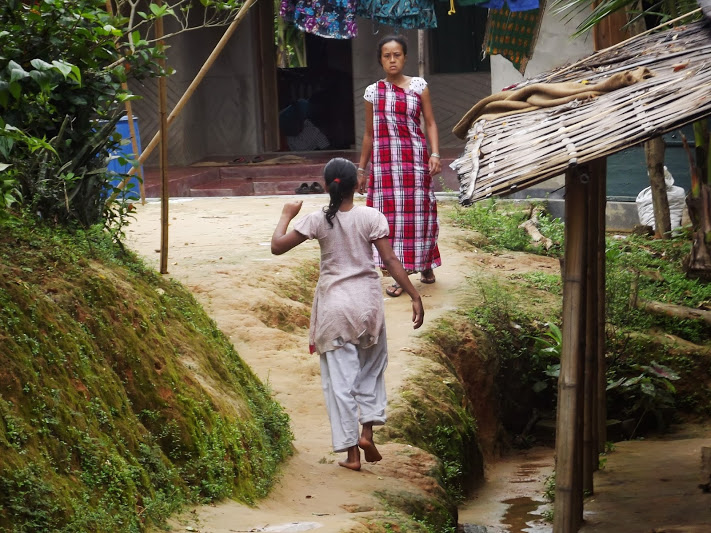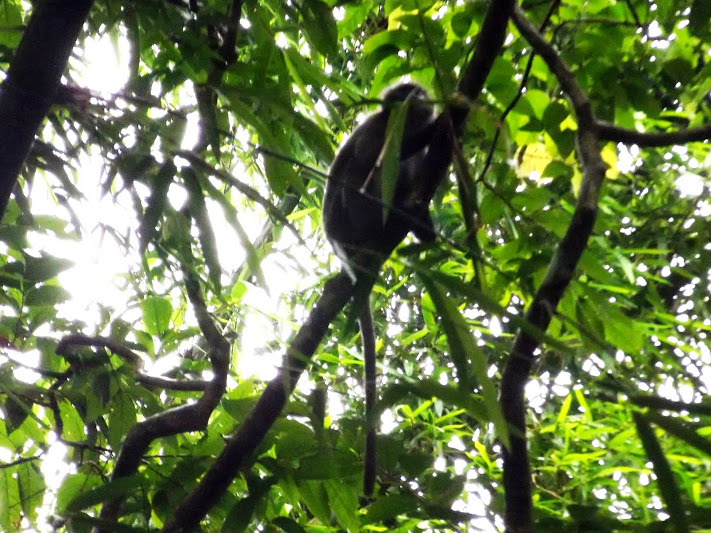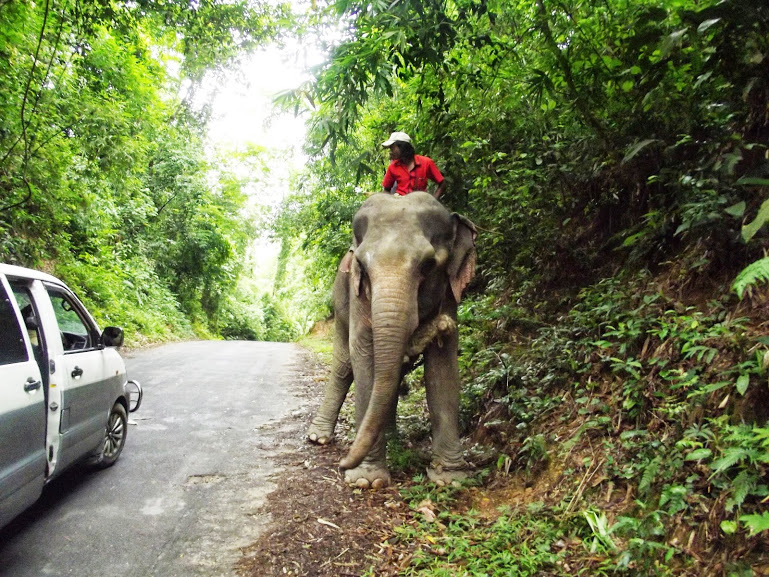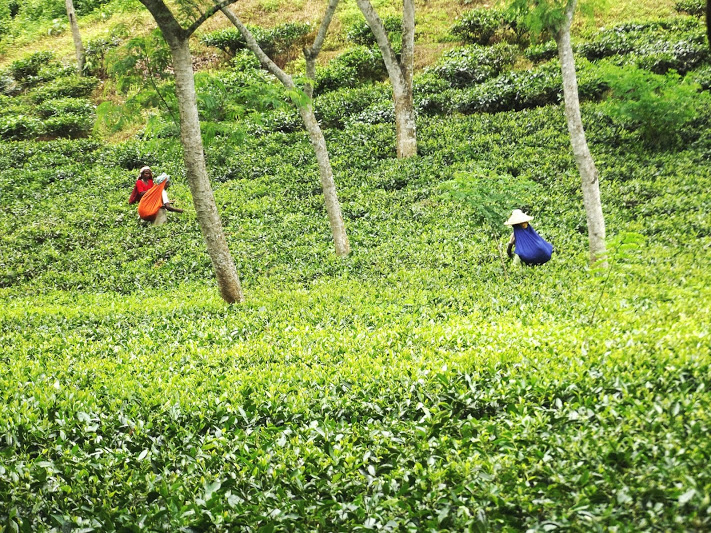Sreemangal is a hilly area of North-East Bangladesh just close to the border of India’s Tripura. The area is famous for its tea plantations, pineapple cultivations, jungles, lakes and waterfalls. But another interesting feature of Sreemangal is the presence of the tiny Khasi community of Bangladesh.
Khasis use to build their villages (“punji”) in the top of hills, more likely in the middle of dense forests or jungles. The Khasis are a matrilineal society and nowadays mostly profess Christianity. Khasis are one of the smaller indigenous groups living in Bangladesh. Bigger Khasi community is present in India, especially in the state of Meghalaya. Some of them live also in Assam and more widely in all the North-East India.
To meet few of them I had to enter the jungle of Lawacherra, just 12 km far from Sreemangal town, a nicely maintained rain forest. The Lawacherra forest is home of a lot of wild animals, the more notable of which are the monkeys. Also several species of parrots and other tropical animals, birds and insects live there.
Approximately in the middle of the jungle there is a slow water stream and just crossed it starts to rise an hill. In the top of the hill stands a Khasi “punji”, all surrounded by trees of areca and betel. A nice but very steep stair “welcomes” the “guests” to the village.
Inside the village, a few houses (or better, huts) built over low stilts and several paths going in all the directions. Remarkable the presence of captions in Bengali and English, requesting: “Please do not throw litter in the ground”, symptom of a deep sense of clean felt by the Khasi people.
First of all some children came to my sight for a while, just for run away very soon. Gradually coming more inside the “punji” I could see some girls and women with a traditional and very particular dress, formed by a rectangle of cloth wrapping the body and fastened over one shoulder, but I could not see any man. I kindly asked to a young girl (whose name turned out to be Pinky) where the men are and she replied me that the men usually spend the day picking up leaves of betel and areca nuts – activity which is their main means of subsistence – so they stay outside the village most of the time.
Very soon an older lady came to me and asked few questions (which I gladly replied) and I readily took the chance to ask her more about the organisation of the village and their life. First of all I noticed that there was no electricity connection and she explained me that few houses have solar panel on the roof top, while the other houses more simply have no electricity.
Their economy is based on betel and areca business. After collecting, they bring leaves and nuts to Sreemangal town and sell them, buying in exchange some needed goods. For the water, they have to bring manually from a nearby spring. Some other food is collected from the forest.
The old lady also brought me in a far point of the village, apparently the higher point of the hill, where I could see a one-storey wood building with a caption: “Girl’s primary school”. She explained me that a German tourist some years ago came in visit and gave as gift to the community the money to build all the wood benches inside for the pupils.
After that short conversation and after a further walk around the “punji”, I decided to come back on my way. During the tour, I could see a group of 6-7 Bengali people doing almost my same activity: to peek around the village. I felt a little uneasy and definitely decided to leave then.
Coming down the stairs, I could see another group of 5-6 Bengali people (rather noisy) climbing the stair in my opposite direction. Only in that moment I realised the real hard life of those Khasi people: they were living like in a sort of “zoo”, undergoing a steady flux of tourist eager to see them and their village.
Frankly, this situation was not new at all for me. All over the Sreemangal area I could visit also some Manipuri and Tripura villages, and their condition is very similar: small villages with houses often built by NGOs, always full of a plenty of Bengali tourist peeking all around, at times coming also inside the private houses as they would enter in a museum of Ethnology.
I love tourism and I love to meet especially indigenous people in their native setting. But I feel a mix of conflicting feeling in front of this “zoo-like” life they have to undergo.
Whatever, apart from sad considerations, it will be difficult for me to forget the Khasi people, living in their nice and clean village in the top of the hill, in the middle of the Lawacherra forest, Sreemangal.
(FROM A TRAVEL IN SREEMANGAL, JULY 2013)
Previously published in: http://www.nelive.in/north-east/travel/meeting-khasis-sreemangal







You made some gookd points there. I checked on tthe net to
learn more about the issue and found most individuals will go along with your
views on tgis site.
Howdy I am so delighted I found your website, I really found you
by accident, while I was researching on Yahoo for something else,
Anyways I am here now and would just like to say thank you
for a tremendous post and a all round interesting blog (I also love the
theme/design), I don’t have time to read through it all at the moment but I
have book-marked it and also added your RSS feeds, so when I have time I will be back to read a great deal more, Please do keep up the excellent
job.
Very good info. Lucky me I discovered your blog by accident (stumbleupon).
I have saved it for later!
Excellent, what a blog it is! This website provides helpful facts to us, keep it up.
I like what you guys are usually up too. Such clever work and reporting!
Keep up the superb works guys I’ve included
you guys to my personal blogroll.
It’s actually a nice and helpful piece of information. I’m satisfied that you just shared this helpful info with us.
Please stay us informed like this. Thank you for sharing.
Very soon this web site will be famous among all blogging users, due to it’s nice
posts
I was excited to discover this great site. I need to to thank you for ones time just for this wonderful read!!
I definitely appreciated every little bit of it and i
also have you book-marked to check out new information on your website.
My partner and I stumbled over here by a different web page and
thought I should check things out. I like what I see so now
i’m following you. Look forward to exploring your web page for a second time.
Keep on writing, great job!
What’s up it’s me, I am also visiting this site daily, this site is
really fastidious and the viewers are actually sharing
pleasant thoughts.